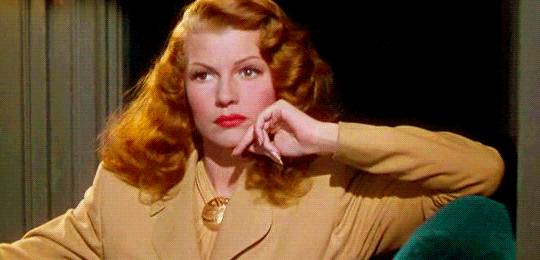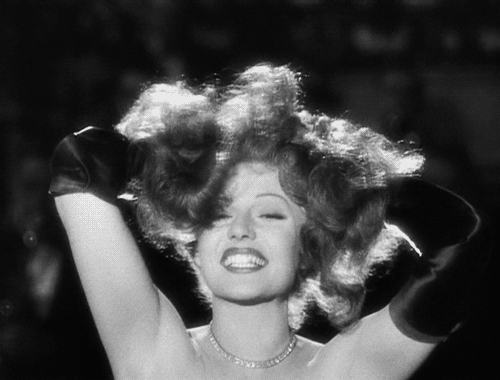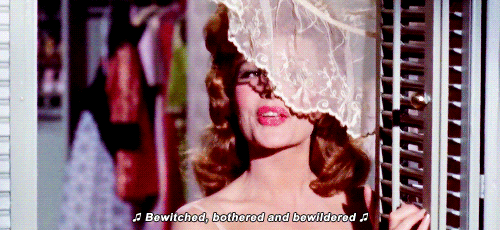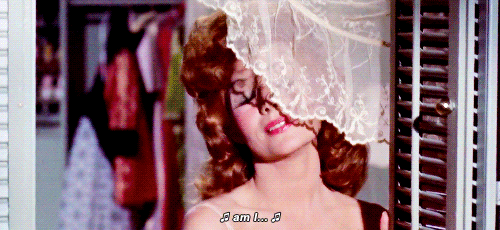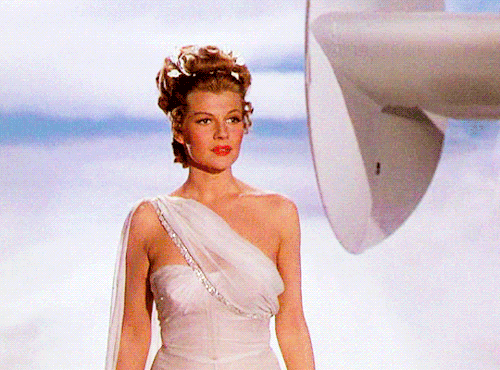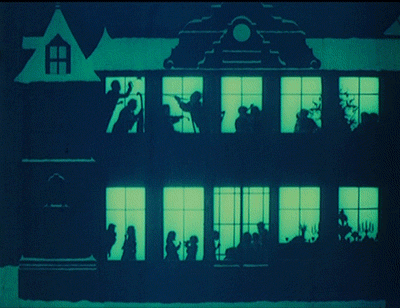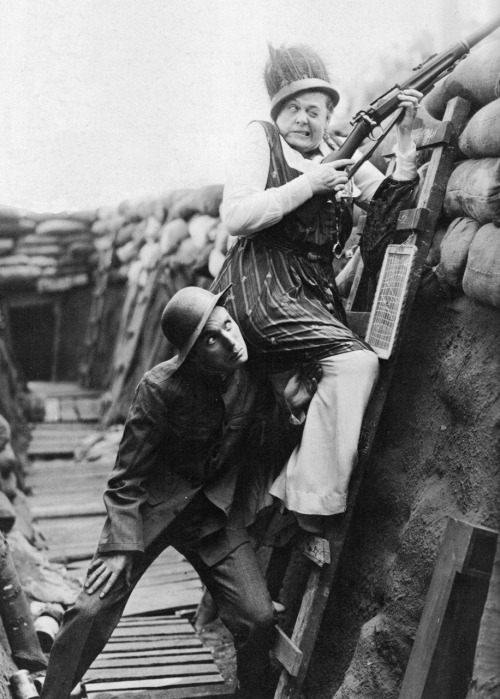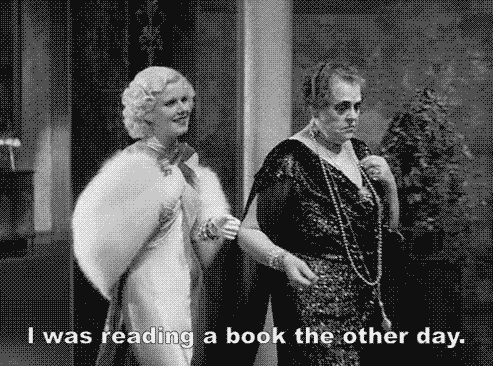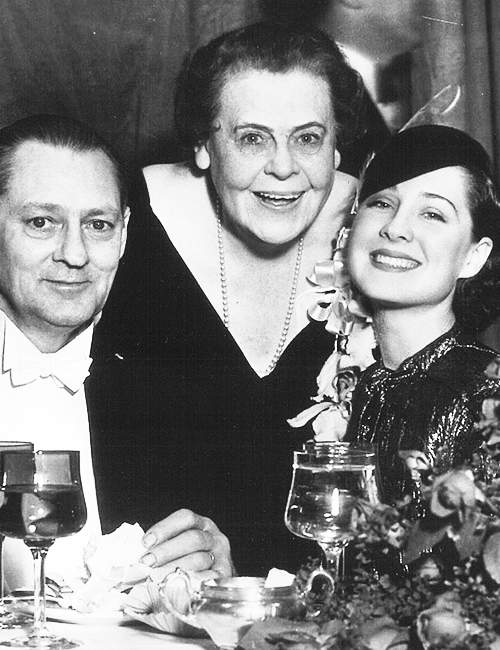Ela nasceu Margarita Carmen Cansino em 1918. Para
milhões de pessoas, ela será para sempre Gilda, a protagonista do filme homônimo
de 1946. Mas Rita Hayworth foi muito mais que a sex symbol que seduziu Glenn Ford no clássico noir. Ela inclusive
chegou a dizer que seus relacionamentos haviam falhado porque os homens se
apaixonavam por Gilda, mas acordavam com Rita.
She was born Margarita Carmen Cansino in 1918.
For millions, she will always be Gilda, the leading lady in the homonimous 1946
film. But Rita Hayworth was much more than the sex symbol who seduced Glenn
Ford in the noir classic. She even said that all her relationships had failed
because the men fell in love with Gilda, but woke up with Rita.
Começou como dançarina, formava uma dupla com o
pai, professor de dança, e brilhou nas telas pela primeira vez em 1934 (é
praticamente impossível vê-la em seu primeiríssimo filme, de 1926). Não tentem
encontrar a Rita que todos conhecemos: aos 16 anos, Rita Cansino era uma moça
morena com fortes traços latinos. Precisou se “americanizar” para conseguir
papéis melhores e não ser estereotipada. Tornou-se ruiva e fez eletrólise nos
cabelos para aumentar o tamanho da testa. Estava criada a lenda.
She started as a dancer, was in a duo with her
father, a dance teacher, and was alrady shining in her first film, from 1934
(it's neraly impossible to spot her in her very first screen appearance, from 1926). Don't try to find the Rita we all know: at age 16, Rita Cansino was a
brunette with strong Latin features. She had to be “Americanized” to get better
roles and not become sterotyped. She became a red-head and did eletrolisis in
her hairline in order to widen her forehead. The legend was then created.
A música e a dança estavam muito presentes nos
primeiros sucessos de Rita. Embora ela tenha sido notada pelo grande público
pela primeira vez em “Paraíso Infernal / Only Angels Have Wings” (1939), foi
com os musicais que alcançou maior prestígio no início da carreira. Teve a
honra de dançar com Fred Astaire e Gene Kelly. O próprio Fred disse uma vez que
Rita foi sua parceira de dança favorita.
Music and dance were always present in her first
screen successes. Even though she had been noticed by the audience for the
first time in “Only Angels Have Wings” (1939), she got more compliments in
musicals when she was starting. She had the honor to dance with both Fred
Astaire and Gene Kelly. Astaire himself once said that Rita was his favorite
dance partner.
E ela foi, realmente, uma deusa em “Quando os
Deuses Amam / Down to Earth” (1947). Rita interpreta Terpsícore, a musa grega
da música e da dança. Sua função era inspirar os artistas, mas ela tem uma
ideia bem diferente: quer atrapalhar o musical de Danny Miller (Larry Parks),
que não está tratando as musas com o devido respeito. Ela convence Mr. Jordan
(Roland Culver) e o mensageiro 7013 (Edward Everett Horton) a deixarem-na ir
para a Terra, prometendo ajudar Danny. O plano de Terpsícore não é executado,
porque ela se apaixona por Danny e ainda consegue o papel principal no musical.
She was a literal goddess in “Down to Earth”
(1947). Rita plays Terpsichore, the
Greek muse of music and dance. Her function was to inspire artists, but she has
a very different idea: she wants to cause trouble in the musical made by Danny
Miller (Larry Parks), who is not treating the muses respectifully. She
convinces Mr. Jordan (Roland Culver) and Messenger 7013 (Edward Everett Horton)
to let her come to Earth, promising she will help Danny. Therpsicore's plan
does not go on, because she falls in love with Danny and gets the leading role
in the musical.
“Quando os Deuses
Amam” não é o melhor musical do mundo. Faltam as
músicas que ficam na memória horas, dias, meses após vermos o filme. Alguns
momentos são de vergonha extrema (eu não queria ser nenhuma daquelas chorus girls com figurino rosa bizarro).
Mas mesmo assim é um filme adorável, graças, principalmente, a Rita Hayworth. É
incontestável que ela está realmente divina aqui em Technicolor.
“Down to Earth” is not the best musical in the
world. There are no musics that stick to our memory for days, even months,
after we saw the movie. Some moments involve extreme shame (I wouldn't want to
be one of those chorus girls wearing bizarre pink clothes). Nevertheless, it is
an adorable film thanks to Rita Hayworth. We can't deny that she is a goddess
in Technicolor.
Ela foi femme fatale mais que tudo: “Gilda”
(1946), “A Dama de Xangai / The Lady from Shanghay” (1947), “Carmen / The Loves of Carmen” (1948) e “Salomé” (1953). Com sua sensualidade, ela sempre levava um
homem à ruína ao final desses filmes. E foram muitas as vítimas, incluindo
Glenn Ford – mais de uma vez – e o então marido / diretor Orson Welles, na
obra-prima noir de 1947.
She was a femme fatale in several occasions: in
“Gilda” (1946), “The Lady from Shanghai” (1947), “The Loves of Carmen” (1948)
and “Salome” (1953). With her sex appeal, she always ruined a man by the end of
these films. And there were many victims, including Glenn Ford – more than once
– and her then husband and director Orson Welles in the noir masterpiece from
1947.
Mesmo nestes filmes, a música ainda estava
presente. Gilda faz o strip-tease comportado e feroz ao som da canção “Put the
Blame on Mame”. Como Elsa Bannister, a loira fatal, ela apenas canta “Don’t
Kiss Me”, tornando mais fácil o processo de enlouquecimento de Michael O’Hara
(Welles) e do marido Arthur (Everett Sloane). A cigana Carmen se exibe em uma
taverna. Salomé faz sua dança dos sete véus.
Even in these films, the music was still present.
Gilda does a different kind of striptease while singing “Put the Blame on
Mame”. As Elsa Bannister, the fatal blonde, she only sings “Don't Kiss Me”,
making it easier for Michael O'Hara (Welles) and her husband Arthur (Everett
Sloane) to be driven crazy. Carmen the gypsy exhibits her moves in a tavern.
Salome does the seven veils dance.
Talvez seja aí que vemos o talento de uma atriz:
na capacidade de interpretar uma personagem tão diferente de si de maneira a
convencer o público. Acreditamos no poder destruidor de Rita enquanto femme fatale, mas ela também se mostra
crível como a dançarina adorável de “Minha Namorada Favorita / My Gal Sal”
(1942) ou Vera, que disputa Frank Sinatra com Kim Novak em “Meus Dois Carinhos
/ Pal Joey” (1957).
Maybe this is where we see an actress's talent:
in her ability to play a character that is so different from herself in a
convincing way. We believe in Rita's destructive power as a femme fatale, but
she is also believable as the lovely dancer from “My Gal Sal” (1942) or as
Vera, who fights with Kim Novak for Frank Sinatra in “Pal Joey” (1957).
Há quem diga que a personagem interpretada por
Ava Gardner em “A Condessa Descalça / The Barefoot Contessa” (1954) foi
inspirada em Rita. De fato, a personagem María Vargas é uma moça exótica que
alcança sucesso no cinema e depois se casa com um nobre. Rita casou-se com o
príncipe Aly Khan em 1949 e ficou três anos afastada do cinema. Há outra lenda, esta mais difícil de ser
comprovada, que diz que a Margarita (o drink!) recebeu este nome em homenagem à
jovem dançarina que se apresentava uma vez no México. Ah, e outra homenagem:
ela foi uma das sexy symbols que
serviu de inspiração para criar a personagem Jessica Rabbit.
Some rumors say that the character played by Ava
Gardner in “The Barefoot Contessa” (1954) was inspired by Rita. Indeed, the
character María Vargas is an exotic lady who becomes a successful movie star
and then gets married to a nobleman. Rita got married to prince Aly Khan in
1949 and spent three years away from the screen. Another legend, mor difficult
to be proved true or false, is that the drink Margarita was baptized after a
young dancer who was working once in Mexico... And one more homage: she was one
of the sex symbols who served as an inspiration to create the character Jessica
Rabbit.
Na vida pessoal, Rita era quieta, sofria de
complexo de inferioridade e lutava contra o vício em álcool. Sonhava com uma
família e acreditou que poderia abandonar o cinema depois de seu casamento com
o príncipe Aly Khan, mas não foi bem assim. A história de Rita Hayworth talvez
tenha sido um conto de fadas sem final feliz. Rita não foi princesa feliz para
sempre. Mas foi deusa. E, para chegar a esse patamar, uma dose de sofrimento é,
infelizmente, necessária.
In real life, Rita was shy, suffered from
inferiority complex and fought against an addiction to alcohol. She dreamed of
having a family and believed she could abandon the cinema after she married
prince Aly Khan. It didn't happen. Rita Hayworth's story was, maybe, a
fairytale without a happy ending. Rita wasn't a princess for ever after. But
she was a goddess. And, in order to achieve this, a dosis of suffering is
unfortunately necessary.
This
post is part of the “getTV Rita Hayworth
Blogathon” hosted by Classic
Movie Hub and running during the entire month of
October. Please visit getTVschedule to
see a full list of Rita Hayworth films airing on the channel this month, and
please be sure to visit Classic
Movie Hub for a full list of other Blogathon
entries.


